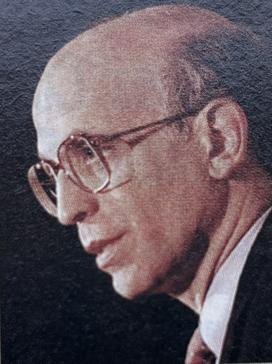The Federal Reserve Bank raised interest rates in February for the fourth time in a year. Marvin Zim ’57 asked economics professor Alan Blinder ’67 to discuss the Fed’s efforts to achieve a “soft landing.” Blinder was vice chairman of the Fed from 1994-96.

Q. How do you define a soft landing?
A. The analogy is to an airplane landing. The idea is to bring the economy in on the full employment runway without crashing through the tarmac.
Basically, there are two types of soft landings – from above and below. In 1994-95 the unemployment rate was too high. So the Federal Reserve worked to stimulate the economy to achieve full employment. That was a successful exercise.
Today we are trying to achieve a different type of soft landing. The current unemployment rate of 4 percent is abnormally low and is likely to fuel inflation. The issue is whether the Fed can maintain full employment without causing inflation. In my judgment, an unemployment rate of 4 ½ to 5 ¼ percent should do it.
Q. What can go wrong to prevent a soft landing?
A. Lots of things. The stock market could either crash or soar again, alternately promoting either more spending or too little. There could be a flight from the dollar, although I doubt it, as foreigners lose patience with holding so many dollar assets. Or the Fed could get carried away, as it did in 1994 and tighten too much. The history of recessions in the postwar period is the Fed tightening too much.
Q. The four increases in the Federal Funds rate in the past year haven’t slowed the economy. Why hasn’t the Fed been able to achieve the results it wanted?
A. First, there are long lags before interest rates have an effect on the economy. Secondly, because the Treasury has been paying down debt, long bond rates have not increased as much as you might expect. Thirdly, the stock market has been rising, which fuels spending.
Q. Is the Federal Funds rate the only tool the Fed can use to slow the economy?
A. Pretty much. The Fed has legal authority over bank reserve requirements, but it hasn’t used that in more than a decade. Fiscal policy is a very clumsy instrument. It takes a whole year for Congress to go through its budgetary process. And the process is highly political. We have one presidential candidate, Mr. Bush, running on a platform of huge tax cuts when the general perception is that consumer spending is already too high.
Q. When do you expect the Fed’s policies to produce a more normal situation?
A. Pretty soon. It takes a while for interest rate hikes to kick in, but mortgage rates are up, and home buying has already declined a bit. I suspect wages may begin to rise soon, and that would affect corporate profits.
This was originally published in the April 5, 2000 issue of PAW.










0 Responses